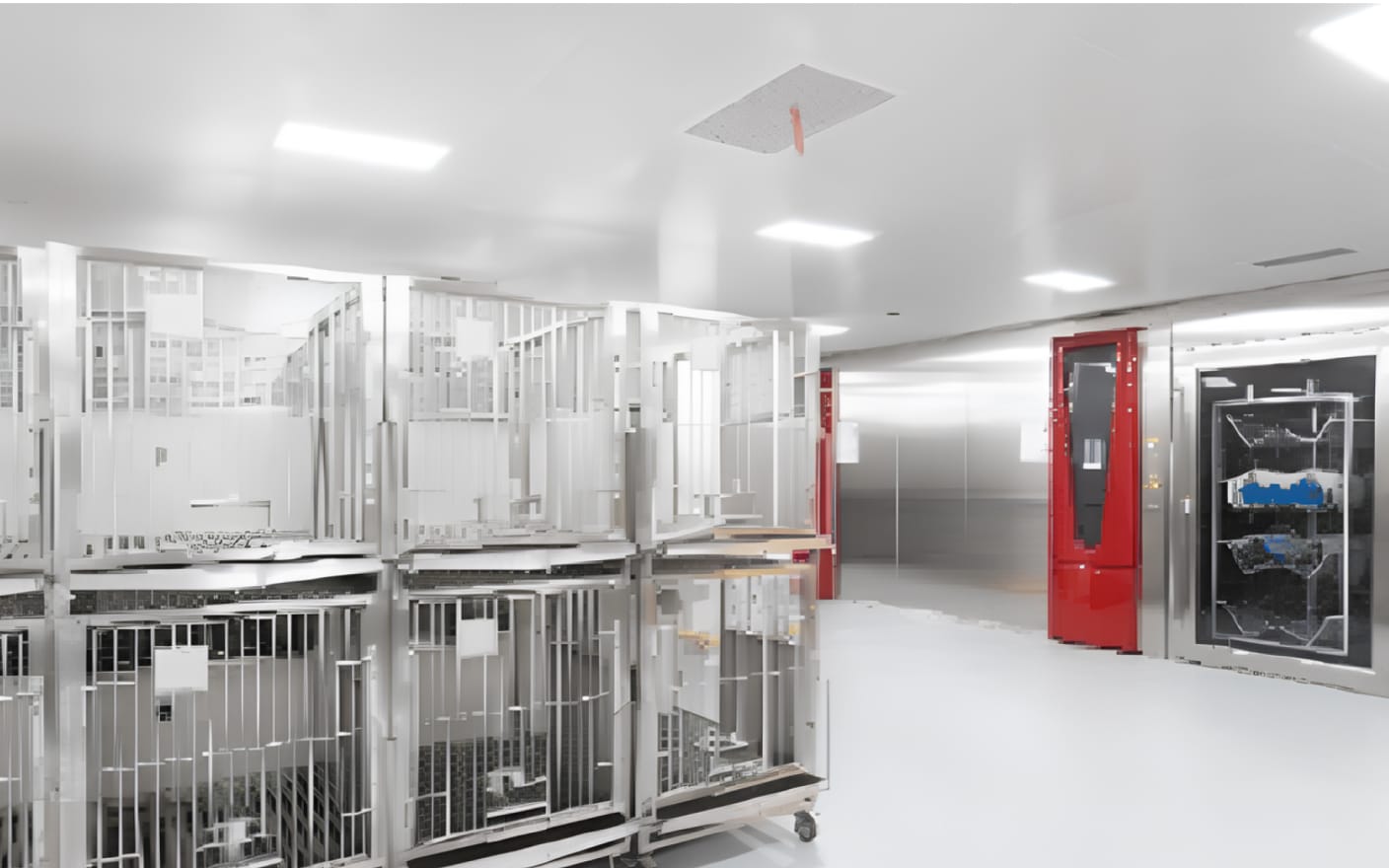Compared with oral or injection administration, transdermal drug delivery is more convenient and flexible. It has the potential to greatly improve the safety and compliance in some patient populations. The development of transdermal drug delivery systems (TDDS) has become an important field in the pharmaceutical industry.
In vivo pharmacokinetic study is one of the crucial parts during the optimization and evaluation of transdermal products1. Using animal models to evaluate the skin permeability and pharmacokinetic parameters of a certain drug provides a direction for the research and optimization of the development of transdermal formulations. In this article, we will discuss the strategies used in vivo test study design, compare the results from different skin models, and the solutions to address the challenges in sample collection and treatment.
General considerations in in vivo transdermal drug studies
In vivo experiments involve the use of different animal species. After transdermal administration, certain body fluids, such as blood and/or urine, and tissue including epidermis, dermis, adipose, and subcutaneous muscle layers are often collected at set time points. By measuring the drug content in these samples, the effectiveness and bioavailability of the test formulation can be assessed. A good correlation between in vitro permeation testing (IVPT) and in vivo experiments has been established for some of the products2. Through rapid screening with IVPT, the percutaneous penetration parameters of the compounds can be obtained, and specific influencing factors of percutaneous absorption in different transdermal formulations can be examined. The efficacy, dosage, and skin irritation of the candidate formulation can be optimized and the clinical dose can be estimated with in vivo experiments The DMPK service department of WuXi AppTec has conducted dozens of in vivo transdermal PK evaluations to date. Our capabilities expand from experimental animal selection and evaluation, skin application strategy implementation, multi-point minimally invasive skin collection, and skin stratification process. In the content below, we will focus on the following key elements:
Specie Selections
In the early stages of transdermal formulation development, porcine skin is most commonly used to simulate human skin tissue due to its similarities to human skin in both histological and biological structures3,4. In Table 1, some of the key skin parameters are compared across different animal species4.
|
Parameters |
Human |
Pig |
Guinea Pig |
Rat |
Mouse |
|
Skin appendages |
Dense |
Dense |
Loose |
Loose |
Loose |
|
Hair |
Sparse |
Sparse |
Sparse or dense |
Dense (except for some breeds) |
Dense (except for some species) |
|
Epidermis |
Thick |
Thick |
Thick |
Thin |
Thin |
|
Dermis |
Thick |
Thick |
Thick |
Thin |
Thin |
|
Subcutaneous muscle |
Absent |
Absent |
Present |
Present |
Present |
|
Healing mechanism |
Re-epithelialization |
Re-epithelialization |
Contraction |
Contraction |
Contraction |
Table 1. Comparison of skin between different animals and humans4
At WuXi AppTec, we evaluated the skin histology of Bama mini pigs by gross examination of the skin appearance, under light microscopy, and using immunohistochemical staining. In Figure 1, the HE stains demonstrated the skin sections from the Bama pig used in our laboratory. The thickness of each skin layer was also measured. The comparisons to human skin features are provided in Table 25. These data show that Bama mini pigs have features comparable to human skin and are suitable for the evaluation of transdermal formulations.

Figure 1. HE staining of Bama mini pig skin with the thickness of each skin layer measured
|
Type of skin |
Stratum Corneum (μm) |
Epidermis (μm) |
Dermis (mm) |
|
4-Month-old Bama pig |
14.900 ± 1.370 |
84.800 ± 3.360 |
1.271 ± 0.068 |
|
6-Month-old Bama pig |
15.600 ± 1.506 |
97.100 ± 4.532 |
1.933 ± 0.066 |
|
Adult human |
15.100 ± 1.663 |
86.200 ± 6.579 |
1.315 ± 0.069 |
Table 2. The thickness of each skin layer in Bama mini pigs and humans5
Damaged skin model vs. Normal skin model
The living habits of Bama mini pigs, such as rooting and rubbing their skin, pose multiple challenges to animal restraint and drug administration. After years of technical exploration and continuous optimization, we have developed a comprehensive operating procedure and evaluation method with the help of a variety of practical home-grown experimental tools. They meet the need for applying different types of formulations, ensuring the consistency of drug application, and the ultimate reliability of experimental data.
Based on different requirements of each experimental design, the skin condition is evaluated accordingly. For experiments using normal and intact skin, the skin from an animal is evaluated using our established evaluation standards. When damaged/diseased skin models are needed, specific tools are used to ensure animal welfare integrity. The degree of skin damage is evaluated according to the established standards to ensure the reliability and reproducibility of each experiment. For example, Figure 2 shows a representative HE-staining of the skin of a Bama mini pig. The left panel shows the skin with stratum corneum and epidermis removed, as to the normal skin in the right panel. The concentrations of the experimental drug “A” in the dermis and plasma are significantly higher in the damaged skin group as compared to the intact group (Figure 3), indicating a compromised skin barrier is established in the damaged skin model and increased percutaneous absorption of drug “A”.

Figure 2. HE staining results of Bama mini pig skin
(left: results from damaged skin; right: results from normal/intact skin)

Figure 3. Analytical results of drug “A” concentrations in plasma and dermis from different skin models
(A) The average drug concentrations in plasma from damaged and normal skin groups;
(B) The ratios of drug concentration in the dermis from damaged and normal skin groups
Collection and processing of skin samples
The collection and processing of experimental samples are designed to match the needs of the study design. For topical formulations with only local effects, the collection of skin samples and the skin stratification process is more critical than blood collection. For example, the same skin collector is used in the same animal to collect a series of skin biopsies at different time points, minimizing the damage to the animal while maintaining the uniformity of each sample. Microtomes are used to stratify skin layers according to the different thicknesses of each skin layer. Based on different study designs, stratum corneum, epidermis, dermis, and subcutaneous adipose tissue may be separated. Each separated skin layer is then homogenized using the bead milling method at a relatively stable low temperature to ensure the homogeneity and uniformity of the sample. Compared to the traditional homogenization method, the bead milling method demonstrated clear superiority in sample quality (Table 3 and Figure 4).
|
Homogenization method |
Advantages |
Disadvantages |
|
Traditional homogenization |
|
|
|
Bead milling method |
|
|
Table 3. Comparison of homogenization results of different skin layer homogenization methods

Figure 4. Tissue after homogenization (left: tissue homogenized using the traditional method; right: tissue homogenized by bead grinding method).
Conclusion
In vivo dermal pharmacokinetic studies require comprehensive study design, reliable experimental skills, as well as reproducible animal models . The DMPK service department of WuXi AppTec has extensive experience in conducting such in vivo dermal PK evaluation, capable of providing valuable insights for future research and improving the safety efficacy, and user compliance for transdermal dosage forms.
If you want to learn more details about the strategies for transdermal drugs, please talk to a WuXi AppTec expert today to get the support you need to achieve your drug development goals.
Authors: Linlin Pei, Huan He, Chao Zhang, Zhihai Li, Shoutao Liu
Committed to accelerating drug discovery and development, we offer a full range of discovery screening, preclinical development, clinical drug metabolism, and pharmacokinetic (DMPK) platforms and services. With research facilities in the United States (New Jersey) and China (Shanghai, Suzhou, Nanjing, and Nantong), 1,000+ scientists, and over fifteen years of experience in Investigational New Drug (IND) application, our DMPK team at WuXi AppTec are serving 1,500+ global clients, and have successfully supported 1,200+ IND applications.
Reference
1. Xia Jiang, Xun Ma, Wanhui Liu, et al. Research Progress on Permeability of Transdermal Patches, Chinese Pharmaceutical Affairs. 2023,(3):312-320
2. Du J, Chen J. Experimental Methods for Studying Drug Transdermal Absorption. Chinese Pharmaceutical Journal, 1988, 23(6): 323-327.
3. JACOBI U, KAISER M, TOLL R, et al. Porcine ear skin: an in vitro model for human skin. Skin Res Technol, 2010, 13(1): 19-24.
4. SUMMERFIELD A, MEURENS F, RICKLIN M E. The immunology of the porcine skin and its value as a model for human skin. Mol Immunol, 2015, 66(1): 14–21.
5. Chen J, Hu J, Wei H. Comparative Study on Skin between BAMA Miniature Pig and Human. Chinese Journal of Comparative Medicine, 2006, 16(5): 288-290, 319
Related Services and Platforms




-

 In Vivo PharmacokineticsLearn More
In Vivo PharmacokineticsLearn More -

 Therapeutic Areas DMPK Enabling PlatformsLearn More
Therapeutic Areas DMPK Enabling PlatformsLearn More -

 Rodent PK StudyLearn More
Rodent PK StudyLearn More -

 Large Animal (Non-Rodent) PK StudyLearn More
Large Animal (Non-Rodent) PK StudyLearn More -

 Clinicopathological Testing Services for Laboratory AnimalsLearn More
Clinicopathological Testing Services for Laboratory AnimalsLearn More -

 High-Standard Animal Facilities and Animal WelfareLearn More
High-Standard Animal Facilities and Animal WelfareLearn More -

 Preclinical Formulation ScreeningLearn More
Preclinical Formulation ScreeningLearn More
Stay Connected
Keep up with the latest news and insights.











